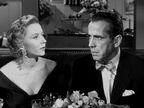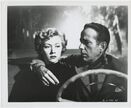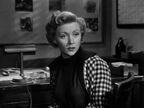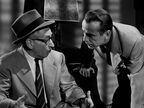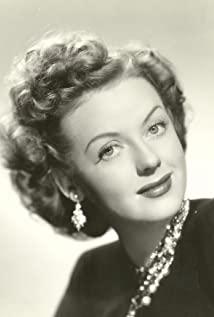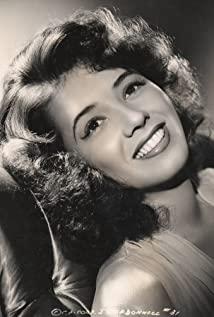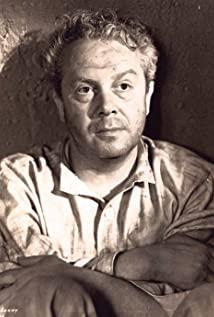"Bloody Blue Girl" tells an uncomplicated story: the playwright Steele becomes a murder suspect, and the testimony of his female neighbor, Grey, clears him from suspicion. The two met and became lovers. But because the real culprit could not be found everywhere, Grey became suspicious, so a relationship came to an end on the eve of sublimation...
This is a concise movie, and its goodness is based on this. At the beginning of the story, the director made it clear that Steele was not the real murderer. The subsequent plot focused on the development of the relationship between the two, but the plot kept hinting at the final low end of the relationship. So it may be the only commercial element in the film: suspense, which is also gone halfway through the story. So all forms become clouds, and what we turn to focus on is exactly what the director emphasizes: the turning of details, the accumulation of characters' emotional power from weak to strong, and external forces.
This is a very interesting and contradictory approach: first explain that Steele is not the real murderer, and then find a suitable entry point when the love story occupies most of the narrative time, laying up doubts and pointing the finger at Steele, these doubts should be hidden. The entering of the sound, the accumulated strength cannot destroy the original innocence setting, and at the same time must have effective destructive power, so that the ending between lovers will not be abrupt. At the same time, the creator must also take into account another structural problem. If all these details are written into the story line of the development of the two people's love, the plot will become bloated and the rhythm will be out of control.
The solution is actually quite simple. At the beginning of the story, three story lines are clearly distinguished: one is that Steele took over the job of adapting a novel to create a movie script with a suspenseful murder as a selling point; the other is the detection of a murder case; The third is the love between the hero and heroine. In this way, all doubts can enter the story evenly and orderly. Even before the three storylines begin, the foreshadowing has been placed into the story. In the first scene, Steele was suddenly provoked and shot people, laying the first foreshadowing of the violent tendencies in his character.
According to these three different clues, the foreshadowing is cleverly attached to it. Grey's distrust of Steele mainly comes from two directions, one is the direct experience, the in-depth understanding of Steele in the relationship; the other is the indirect influence of external forces, such as the misjudgment from the police detective , Suspicion from friends; when these two forces are combined, misunderstandings begin to take root and linger. With the development of the relationship, the violent tendencies in Steele's character are becoming clearer and clearer; when interacting with friends, as a playwright's professional knowledge of criminal psychology and behavior brings unwarranted suspicion; the murder case remains unsolved for a long time. The stubborn sheriff always believes that the real murderer is Steele, all of which have a profound impact on Grey's inner world.
In order to maximize the effect of indistinguishable truth under the setting of innocence, the character settings surrounding Steele are also quite thoughtful. His detective friends and agents are his firm trustees; the sheriff is a firm doubter; his friend's wife and Grey are among them, and gradually approach the latter. The entire character network is designed to be nearly balanced. The two forces of opposing conflict are always in an uncertain equilibrium. The reversal of emotional value at the end of the second act becomes stronger and stronger, and pushes the story directly to the third. curtain climax.
After the story enters the third act, all the foreshadowing has been completed, the climax is in a critical state before the outbreak of concentration, and the most exciting scene of the whole film finally arrives. At the end of the second act, the real culprit has been identified, and the police are trying to inform Steele and Grey of the news, but they cannot be reached. At this point, Steele briefly broke out at the bar because of the script, and when he regained his composure, he left with Grey. When the police called, they couldn't find them. At Grey's residence, Steele sincerely apologized to Grey, and it seemed that everything disappeared. However, some of Grey's weird behavior once again aroused Steele's suspicions, and emotions began to brew, and the phone rang suddenly... At this time, we have determined that Steele is innocent, and we hope that the relationship between the two will not be caused by misunderstanding. In the end, we were looking forward to the two of them to settle their differences, we were waiting for a phone call... but it was the airline's call, and the flight she booked was canceled. So Grey's idea of leaving was exposed, and Steele was completely out of control. He grabbed Grey's neck in a rage, and he wanted to kill Grey who betrayed him... Grey couldn't break free with all his strength, and it seemed that everything was going bad. As the direction develops, the phone rings again... It seems to be another chasing ringtone, Grey's face is ashen... Steele picks up the phone, but it is the police call, the sheriff wants to apologize to Grey... Put down the phone , Steele was completely sober, so he handed it over to Grey. I really want to be clear, can these two return to the beginning? Just two phone calls successfully created two turning points, and the plot was reversed again and again at the climax of the story, which is really a stroke of genius.
As an atypical suspense film that wins by rhythm, Nicholas Ray's control of the overall situation and Bogart's interpretation of the characters are the two keys to the film's success. In particular, Bogart's restrained performance is very layered. It matches the rhythm, progress and speed of the film. actor. I saw a sentence in the introduction, saying that this movie is one of the best movies that focus on the current situation, I feel a little baffling. Even if this movie has something to do with the "Hollywood Ten Gentlemen Incident" or "McCarthy Incident", the original intention of the writer and director was also directed at this incident, but it still has some practical significance to talk about it in 1950. Today in the 21st century, it is impossible to keep pace with the times. If a good movie has a specific theme, then it is the same whether it is ancient or modern, and it is human nature.
How can a movie like this be without such a scene? In the bar or hall, three or four people sit quietly and listen, while in the center of the venue, there is always a middle-aged man or woman playing the piano, chanting in a low voice...
View more about In a Lonely Place reviews



